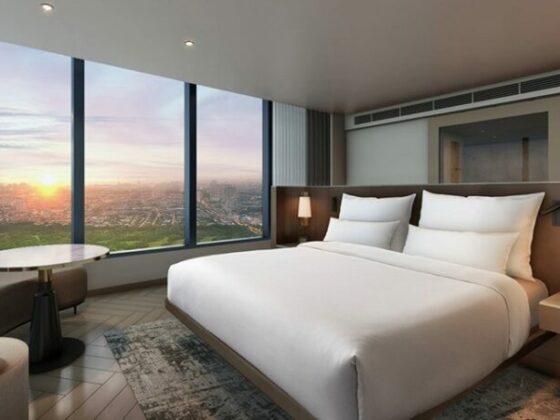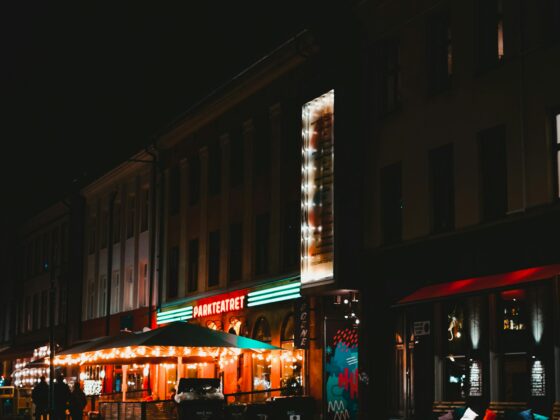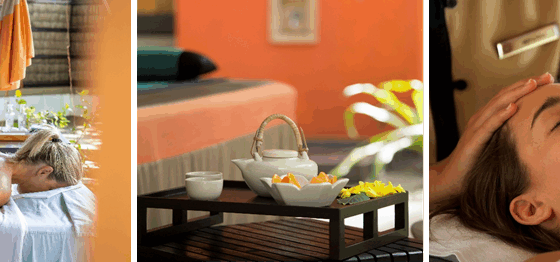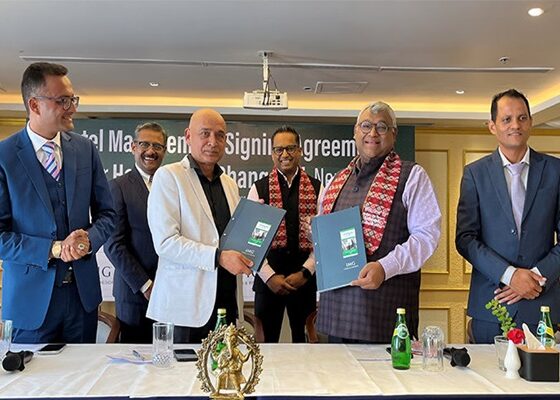Shangri-La Group has arrived in Cambodia with a waterfront hotel in Phnom Penh. Located in the Koh Pich neighborhood, the new hotel opened on December 28, 2024.
The Shangri-La Phnom Penh is part of a 228-meter tri-tower development, one of the tallest structures in the city. The 303-room hotel offers panoramic views of the Mekong, Tonle Sap and Tonle Bassac rivers.
The hotel’s interiors is a blend of Art Deco, neo-classical and Khmer influences. The guestrooms feature wood and stone finishes, with floor-to-ceiling windows providing natural light.
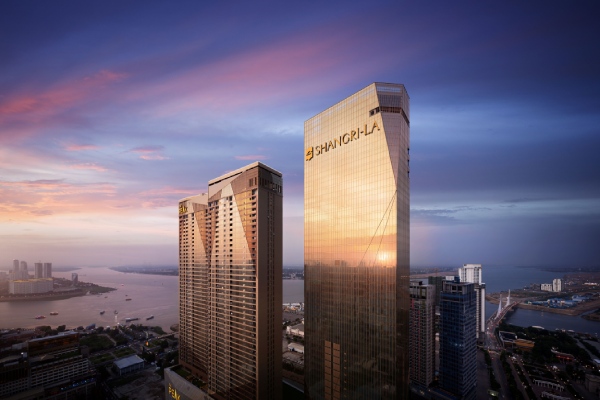
The dining options at the hotel highlight Cambodia’s local heritage. Kommune Dining & Social Space focuses on locally sourced ingredients and Khmer dishes. Additional venues, such as Shang Palace, serving Chinese cuisine, and a rooftop bar, are scheduled to open later this year.
Facilities include a large ballroom, designed for events and conferences, an infinity pool and a spa. These amenities will open in stages following the hotel’s launch.
Cambodia benefits from its geographical position in the Indochina/Southeast Asia circuit, which offers a range of diverse travel destinations. While Camabodia mostly sees short stays as visitors tend to visit neighboring countries within a few weeks, the recent boom in tourism in Asia has resulted in higher visitor volume to Cambodia. By 2025, Cambodia is expected to see a significant growth in its hotel market, with a projected revenue of $93.85 million, according to Statista. When compared globally, the U.S. is expected to generate the most revenue in this market, with a projected revenue of $114,700 million in 2025. With Cambodia’s hotel market rapidly expanding, there will be special focus on luxury properties in Phnom Penh and Siem Reap, the report added.

Currently, Shangri-La owns and/or manages more than 100 hotels across the world across 75 destinations under the Shangri-La, Kerry, JEN by Shangri-La and Traders brands. The group has a strong presence in Asia and has a pipeline of upcoming hotel and mixed-use development projects in Australia, Mainland China and Japan.

